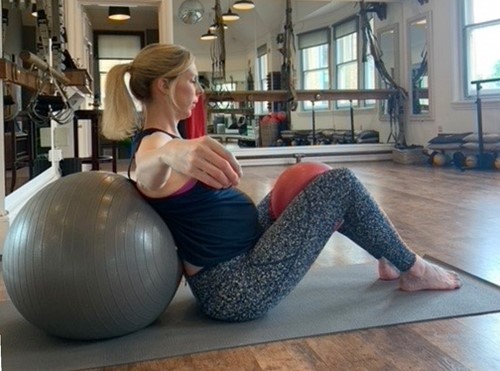Exercise after having a baby - 5 tips to improve your postnatal fitness and health
By Vicki Anstey, founder of Barreworks.co.uk
Getting back to exercise after having a baby can be a daunting prospect. It can also be a very different process depending on the nature of the delivery of your baby, whether natural or c-section and any complications that may slow up the healing process. Of course you may also be breastfeeding which would influence the type of exercise you might choose, and even if you’re not, training around feeding and sleeping patterns adds further challenge to your ambition to settle into a regular routine.
Even just taking gentle walks, planning an occasional swim and working on basic pelvic floor exercises is a brilliant start, so take it one small step at a time and do what you can.
Exercise can start 6 weeks following a natural delivery, but you should wait at least 10 weeks post c-section. Always check with your doctor or care-giver first - and use these timings as a guideline only, don’t put yourself under pressure to do anything too soon. Listen to your body, allow plenty of time for rest and most of all be kind to yourself.
But here are a few general tips you could follow to support as you return to exercise and begin to get back to feeling yourself again:

1. Take things at your own pace.
Your body has been through a lot. You are sleep deprived, you may be feeling full of anxiety and concern about your new baby.
The postpartum hormone drop is considered the single largest sudden hormone change in the shortest amount of time for any human being, at any point of their life cycle. You will still feel the effects of relaxin in your body until 5 or so months after birth - so you will have increased laxity in your ligaments and joints so it’s important that you don’t undertake anything too vigorous or that will place your joints under too much pressure at this time.
Ignore much (if not all) of what you might see on social media and never compare your journey to anyone else’s.
2. Opt for low impact exercise options if you can.
Whether or not you are breast-feeding, anything too high impact will place too much stress on your body initially. But there are plenty of options to build strength slowly and with thorough guidance. Barre is perfect for this - with no leaping around and slower, more controlled movements to activate all the major muscles in the body, plus the smaller muscle groups that will help maintain good posture and correct movement patterns. Think of it as re-setting your foundations to be able to build on that with heavier lifting, spinning or running when you have regained your baseline strength.
3. Restore your core.
Pelvic floor activation can (and should) begin just a few hours after delivery if you feel able. If not, in the days following birth. Even just performing gentle Kegel lifts will help to activate these muscles and support better function, prevent long term incontinence and support you when you are exercising down the line.
More focused work may take a little longer and many women do need expert help with this, but even in the early days, make it a priority to start to re-awaken the pelvic floor and TVA muscle (the deep, low abdominals). Using a Swiss ball to locate the area and beginning to pull pelvic floor up and away is a great way to start. The instability of the ball forces your core to work a little harder too and is great for posture in sitting for extended periods.
4. Enjoy the process/journey.
You probably won’t return to your original shape/size and you definitely won’t do that immediately. Try not to even make that your ambition. Break it all down into tiny steps. It might take you a while to even find a method of movement that works for you, a new class or online community that supports you in the way you need it.
It will take time, so manage your expectations. You may not be able to get back to where you were before your pregnancy began, but don’t see that as a negative, focus on the opportunity you now have to explore different types of training, new communities and find out what your (new) body can do!
5. Set aside time for yourself.
There is a wide variety of Mum & Baby fitness classes available on the market now. But the best advice I can give you (if possible for you) is to try to set aside time to exercise without distraction. There may be times in your week when you have to simply do what you can in between naps and feeds and of course you may not have anyone to help with your baby while you exercise, but if you do, try to set that hour aside for yourself.
Not only will you get a better quality of workout with your sole focus (and that of your Trainer) on you, but this is also a brilliant way to have a short mental break too. It will help with stress levels and allow you to feel a little more like yourself, rather than a permanent extension of your baby! Banish any feelings of guilt about this - a happy baby needs a happy Mama and you deserve the chance to rebuild your strength and resilience for times when you will need it!
About the author:
Vicki Anstey is a leading fitness figure and the founder of Barreworks.co.uk